If you’re a tech savvy deer hunter, you’ve likely taken notice of the rise in deer recovery options with the use of a drone. It was just a few years ago that it seemed like everybody knew somebody buying a bloodhound for tracking and recovering deer after the shot. However, that fad was short lived. Now everybody wants a drone!
Yes, the use of drones for recovering deer takes technology for the deer hunter to a whole new level – literally. And like all things new in the way of technological advances, the use of drones has come with its fair share of controversy.
Are they legal, and are they ethical? These are the two biggest questions surrounding the use of drones. So lets dig in and take a closer look at the ethics of drones in hunting.

Ethical Uses for Drones
Deer Recovery
Deer recovery is where the drone is quickly becoming a viable tool for hunters after the shot. Hunters are learning that a drone is superior in speed when it comes to the time it takes to cover ground in search of your deer. The drone also allows you to search an entire farm without ever putting boots on the ground. The result is minimal human pressure and scent on your hunting property.
It truly is the most efficient way to recover your deer after the shot. What once took hours to search by foot, can now be done in minutes with the use of a drone.
Deer Surveys
Landowners are also realizing the potential of drones for taking inventory of deer populations across the landscape. Drones mounted with quality cameras can pretty much locate every deer on the property. It’s a great way to quickly knock out herd surveys and provide greater management intel as you head into the upcoming season.
Bowhunting.com’s, Todd Graf, recently worked with Mike Yoder of Drone Deer Recovery to survey his new farm in Illinois. Graf was blown away at the capabilities of Yoder’s equipment and the intel the team was able to gather with the use of drones over the farm. “The technology and opportunity drones provide the hunter is absolutely amazing,” says Graf.
Check out Todd’s experience with the Drone Deer Recovery team when conducting a herd analysis on his hunting properties in the video below.
Unethical Uses for Drones
In-Season Scouting
Most states don’t allow for the use of drones as a tool to locate and kill an animal. But even if they did, hunters would be facing an ethical issue here. Think about it. Are you even hunting if you fly a camera over an area to locate deer, then move in to make the kill?
Trail cameras are being outlawed across the country these days for this very same reason. It’s a breakdown in the rules of fair chase. Using a drone to scout a deer’s whereabouts, then follow through with the harvest of that animal, is simply an unethical means of “hunting.”
Finding a Bedded Buck
Finding a buck’s bed is priceless. That’s what many hunters are looking for when they conduct their scouting efforts. Find his bed and where he goes to feed, and you’ll kill him.
Using a drone to locate a bedded buck would obviously be overstepping the bounds of fair chase. The sophisticated cameras and drones make doing so quick and easy. It would leave little for the hunter to accomplish beyond making the shot. Here again, this is an unethical means of using a drone.
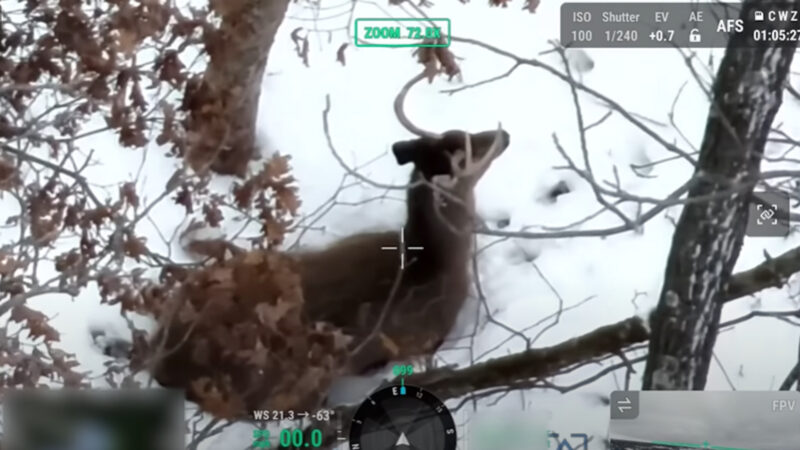
What Are The Laws On Drones For Hunting?
The laws on the use of drones for hunting vary by state. It’s imperative that you check your local regulations before using a drone for any purpose connected to hunting. Just because you saw a YouTube video with someone using a drone to recover deer in Ohio doesn’t mean it’s legal across the country.
Some states tightly regulate their use, while others allow most anything. And there are many states that haven’t addressed the topic at all in their regulations. Remember, it’s all new territory for most state fish & game departments. But you can bet, new rules and regulations are on the horizon as the popularity of drones continues to rise among hunters.
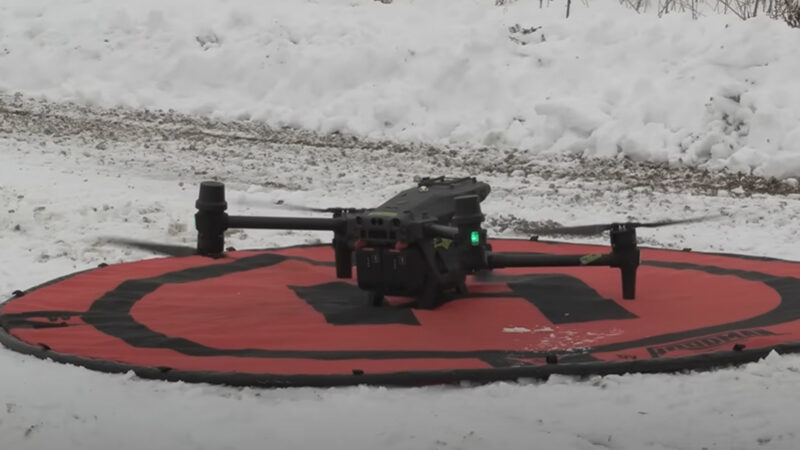
In 2018, Tennessee passed a regulation making it illegal to use a drone for the purpose of hunting. You can’t use a drone to locate a deer, then proceed to kill that deer, or direct a hunting buddy to the location of that deer for the harvest.
But the state says drone use has yet to become a big deal so far. “We really don’t hear much talk about drones at all,” said TWRA Lt. Col. Glenn Moates. “It’s just not something we have to deal with very much.”
The TWRA says it’s also illegal to use a drone for any purpose on a TWRA wildlife management area, refuge, or national park. But not all Tennessee drone laws work against hunters. There is one ruling in place to help hunters. To fight hunter harassment, TWRA says it is illegal to use a drone to observe anyone legally hunting or fishing without that person’s explicit permission. A similar hunter harassment law was put into place in Alabama.
What Other States Are Saying About Drones
The state of Texas holds pretty tight regulations regarding the use of drones by hunters. The rules state that except for depredation species, certain predators, or specific permits issued by Texas Parks & Wildlife Department, the use of drones to hunt, drive, capture, take, count, or photograph any wildlife is unlawful. This includes locating wounded animals as well.
And it’s been nearly a decade since Pennsylvania lawmakers introduced Senate Bill 1332, a law that would ban the use of drones by hunters or anyone looking to disturb other hunters or wildlife.
But other states like Ohio, Wisconsin, Illinois, and Missouri allow for the use of drones for recovering deer after the shot. Just remember, the tool is to be used to recover a dead deer. And that’s where things tend to get a little sketchy. What if you recover a deer that’s still alive with the aid of drone? Is that legal? Where is the line drawn?
Deer hunting in Alabama is big business. The state annually experiences some 1.8 billion in economic impact. Needless to say, they don’t mess around when it comes to what you can and can’t do with their deer populations. But the state does allow for a fairly liberal use of drones by hunters. The state even allows hunters to scout with a drone the same days as their hunt.
“We feel that if you fly a drone over your game plot before you go out hunting, that’s the same as scouting from a truck or ATV,” says Kevin Dodd, Chief Enforcement Officer for Alabama Department of Conservation’s Law Enforcement Division. “If you want to scout to decide which area on your place you want to hunt, using a drone is allowed for the same reason. It’s the same as scouting from a truck.”
Dodd went on to say that you can’t use drones for driving deer or pushing deer to a hunter. You also can’t use drones to survey an area and then communicate back with another hunter to give them information on where the animal is. Fines of up to $500 are dealt out for anyone illegally using a drone or other “motorized conveyance” for hunting.
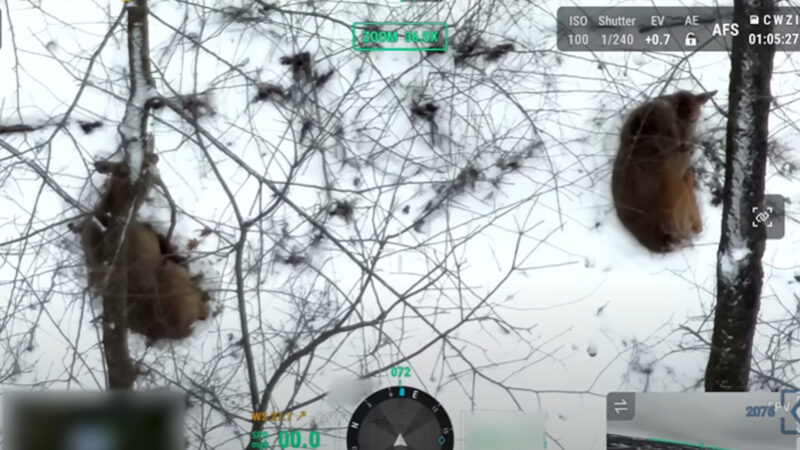
What Hunters Say About Drones
Steve Bryan is an Alabama hunter that recently added a drone to his scouting tools for deer hunting. “It’s a good tool to use,” he said in an article in the Montgomery Advertiser. Bryan likes the drone for the quick scouting abilities it provides.
“I can fly it from the bed of my truck and cover the whole hunting club. It gives you a different perspective. And if you have swampy areas or a thick cutover, you can cover a lot of ground without tramping through mud and briars. I’m not going to fly it from my shooting house while I’m inside hunting or anything like that. I can see where that would be a problem.”
Gray Areas Regarding the Use of Drones for Hunting
Despite the ability to use drones for deer recovery in a number of states across the country, there are still a lot of gray areas regarding the use of drones after the shot. There are plenty of questions that you won’t find answered in the state hunting regulations.
For instance, what if you find a deer with your drone after the shot, but discover that it’s still alive? Is it mortally hit? What if it’s a superficial wound, or broken leg? Can you legally go back to your truck and retrieve your weapon? How long should a hunter have to wait to shoot an animal that’s not seriously wounded? 12 hours? 24 hours?
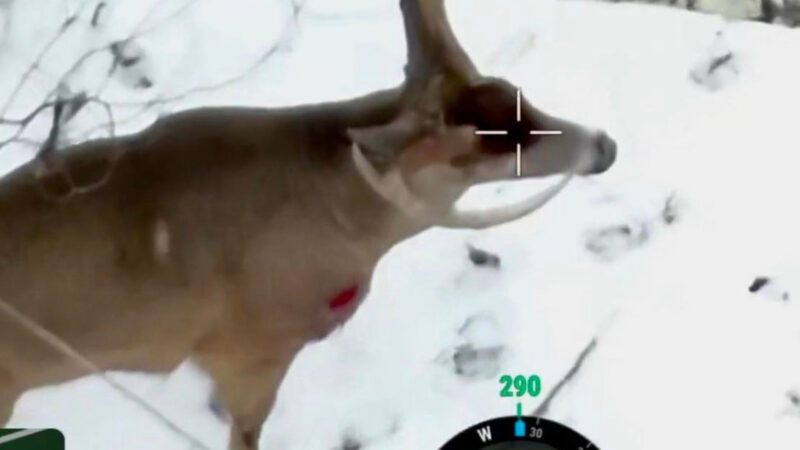
And how long should a hunter have to wait after locating deer with a drone to go back in for the hunt? The same day? Wait 24 hours, or more? Again, most of the questions aren’t answered in the state hunting regulations. It often comes down to ethics.
When ethics are in play, a hunter must simply go with his or her gut. If you’re thinking, “this doesn’t seem right,” then it probably isn’t. Every grown man or woman knows in their heart what is right or wrong. If you find yourself looking over your shoulder to make sure no one is watching, then you might think twice about pulling the trigger.
What about you? What are your thoughts on the use of drones for hunting? Are drones good or bad for the future of hunting?
Comment below, and let us know your thoughts.

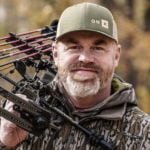 By
By 



